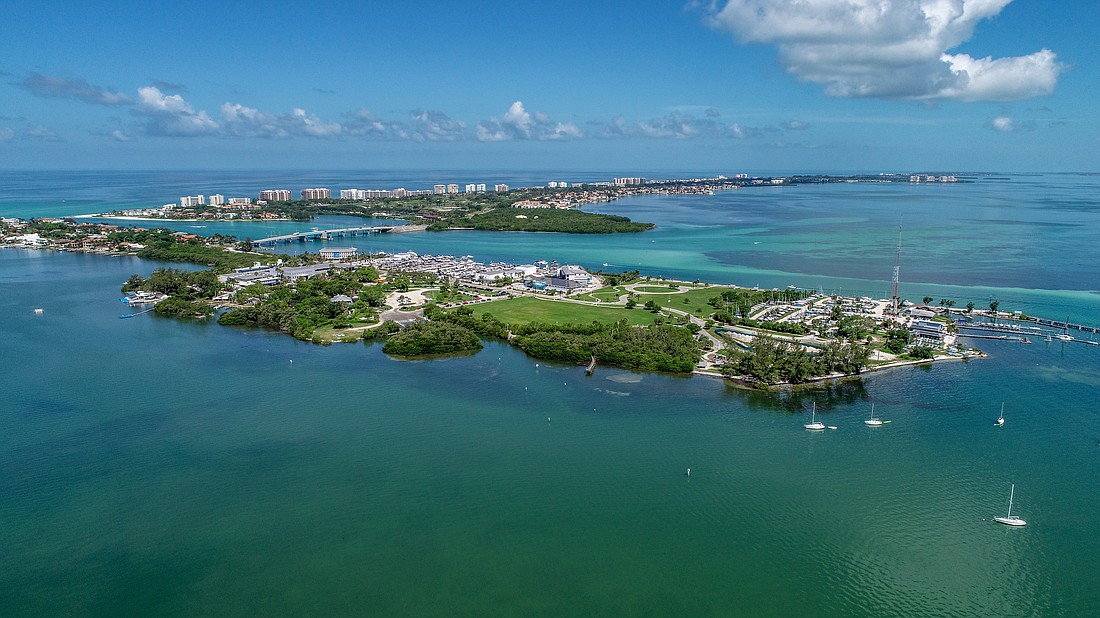- July 26, 2024
-
-
Loading

Loading

Is the water safe for recreation? Suncoast Waterkeeper can give you a good idea.
Every week, the environmental organization collects water samples from popular recreational waters in Sarasota Bay to answer this question and monitor water pathogens.
The main pathogen is enterococci, a type of fecal contamination bacteria commonly used as a saltwater quality indicator because it relates to health hazards.
Suncoast Waterkeeper began regularly monitoring enterococci levels at the start of 2020, a program that now includes 11 sites throughout Manatee and Sarasota counties. Sarasota testing sites include New College Caples Bayfront, Indian Beach, Centennial Park Beach, Bayfront Park and Sarasota Sailing Squadron.
“It’s important to do because we alert people as to the risk of swimming in and around the Suncoast in some of their favorite areas,” Suncoast Waterkeeper Executive Director Abbey Tyrna said.
When choosing testing sites, Tyrna said it first had to be determined that the sites did not have a preexisting history of pollution. Secondly, the sites had to be popular recreational spots, specifically ones where people are getting in the water.
Once a week, Suncoast Waterkeeper sends someone out to the field to collect water samples and drop them off at a local lab.
Sample results are delivered as the number of enterococci bacteria cells per milliliter of water. The threshold is 70 cells/mL, so any result that reads 71 or above is considered a failure and poor quality per Florida Healthy Beaches Program criteria. Moderate is 36-70 cells/mL. A sample of 0-35 cells/mL is considered good.
The safe threshold varies for different uses, such as boating. Tyrna said the threshold of 70 cells/mL is the most conservative and strict.
For Jan. 8, Sarasota Sailing Squadron had 10 cells/mL of bacteria in the sample. But at Centennial Park Beach, the result was 1,376 cells/mL. Sarasota’s Bayfront Park was 52 cells/mL.
While this isn’t always a cause for panic, Tyrna said swimming in waters with elevated levels can pose health risks.
Suncoast Waterkeeper Enterococci Bacteria Report Card | |||
| Location | Samples Collected | Swimmable Weeks | Grade |
| New College Caples Bayfront | 42 | 48% | F |
| Indian Beach | 67 | 51% | F |
| Centennial Park Beach | 67 | 55% | F |
| Bayfront Park - Marina Jack Trail | 41 | 54% | F |
| Sarasota Sailing Squadron | 41 | 76% | C |
| Longboat Key Boat Ramp | 66 | 70% | C |
| Longboat Key Bayfront Park | 46 | 83% | B |
| Longboat Key Little Beach | 40 | 93% | A |
| Note: Data for 2022-2023 | |||
High concentrations of enterococci bacteria can be a risk if ingested while swimming or if the water gets into the body through open cuts or sores, according to the Florida Department of Health. This can cause skin irritation and infections.
The DOH website cites a study conducted by the Environmental Protection Agency that shows a correlation between enterococci and swimming-related gastrointestinal illnesses.
The weekly monitoring program by Suncoast Waterkeeper helps inform swimmers of the potential risks, but also looks at the bigger picture.
“I think without monitoring, you can’t find solutions and go after them,” Tyrna said.
First and foremost, one of the things that Tyrna advised is that rain plays a significant role in the results.
“What we’ve found through doing this work in these areas for the last few years, is a certain trend that, after it rains, to stay out, especially if you are immunocompromised or have open sores,” Tyrna said.
Rainwater can exacerbate the runoff of this bacteria from sources such as septic systems, agriculture and even pet waste.
There can also be spikes from local sources, such as decaying plant matter. This reason likely caused the spike of 24,196 cells/mL at Longboat Key’s Bayfront Park in September.
“If there’s not a lot of decaying plants and it hasn’t rained, it’s either a local source or it’s the sediments that have been disturbed and released the bacteria,” Tyrna said.

When talking about solutions, often the natural next question is: what can be done to mitigate the impacts?
“We’re getting to the bottom of what the sources are, so that solutions start to be thought about,” Tyrna said. “I think for a lot of cases, the solution might be super expensive and so adapting might be the way to go.”
Long-term, bigger solutions include things like regulating waste discharge and wastewater treatment upgrades, she said.
But adapting to these environmental changes may prove more realistic, e.g. staying out of the water after rainfall.
Tyrna said Suncoast Waterkeeper is working on taking testing a step further.
While current sampling only detects the presence of enterococci fecal bacteria, there are DNA tests that can determine if the bacteria is from a human or nonhuman source.
“We learned that, in just about every place we looked, human DNA is in the sample,” Tyrna said. “But what we don’t know is what percentage of the problem is from humans, and that’s what we’re trying to get to the bottom of.”
These samples are qualitative, rather than quantitative. The analysis will look closer at the DNA in both the sediment and the water.
For now, Suncoast Waterkeeper is sticking to two samples in the Palma Sola Bay area. These samples are more expensive, though, at around $1,500 for two samples. The weekly samples cost $11 per sample.
That being said, the organization is working on funding from a private source, along with using some of its own funds. These samples will help the nonprofit understand the sources of fecal bacteria at these sites.